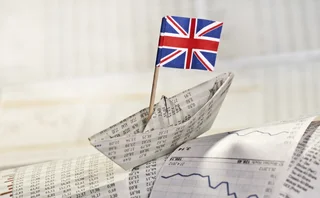
Waiting for growth
A change in accounting rules for Japanese inflation-linked bonds is the latest attempt by Japan's authorities to encourage buying by a broader range of investors. But the country's pension funds have yet to embrace inflation-linked bonds with any real enthusiasm. By Duncan Wood

Short of launching a glitzy advertising campaign, it's hard to know how Japanese officials could do a more obvious job of promoting the country's inflation-linked Japanese government bond (JGBi) market. Since the energence of linkers in April 2004, the Bank of Japan (BOJ) and the Ministry of Finance (MOF) have taken a series of steps to promote the market, first lifting restrictions that froze
Only users who have a paid subscription or are part of a corporate subscription are able to print or copy content.
To access these options, along with all other subscription benefits, please contact info@risk.net or view our subscription options here: http://subscriptions.risk.net/subscribe
You are currently unable to print this content. Please contact info@risk.net to find out more.
You are currently unable to copy this content. Please contact info@risk.net to find out more.
Copyright Infopro Digital Limited. All rights reserved.
As outlined in our terms and conditions, https://www.infopro-digital.com/terms-and-conditions/subscriptions/ (point 2.4), printing is limited to a single copy.
If you would like to purchase additional rights please email info@risk.net
Copyright Infopro Digital Limited. All rights reserved.
You may share this content using our article tools. As outlined in our terms and conditions, https://www.infopro-digital.com/terms-and-conditions/subscriptions/ (clause 2.4), an Authorised User may only make one copy of the materials for their own personal use. You must also comply with the restrictions in clause 2.5.
If you would like to purchase additional rights please email info@risk.net
More on Inflation markets
New investor solutions for inflationary markets
Geopolitical risks, price volatility, clashing cycles, higher interest rates – these are tough times for economies and investors. Ahead of the 2022 Societe Generale/Risk.net Derivatives and Quant Conference, Risk.net spoke to the bank’s team about some…
Brexit and the UK inflation market: delivery and response amid challenges
As inflation continues to rise amid uncertainty following the Brexit vote, banks are being called upon to think outside the box in response. At a forum convened by Risk and sponsored by BGC Partners, our panel discusses the direction of the UK inflation…
US inflation traders consider swap methodology change
Banks weighing up move to non-interpolated standard to cut capital costs
Margin rules push interdealer inflation swaps to clearing
Traders say 95% of the market now cleared, compared with 10% a month ago
Totem poll: users of Markit service call for change
Libor-like consensus methodology creates bad incentives, clients fear
Inflation derivatives house of the year: HSBC
Risk Awards 2015: UK bank married giant linker role with pension fund re-hedge
Corporate risk manager of the year: Electricity Supply Board of Ireland
Risk Awards 2015: Utility found a new way to tackle bank break clauses
Euro inflation floors hit three-year low
Traders point to lower volatility, but one big short is also blamed







